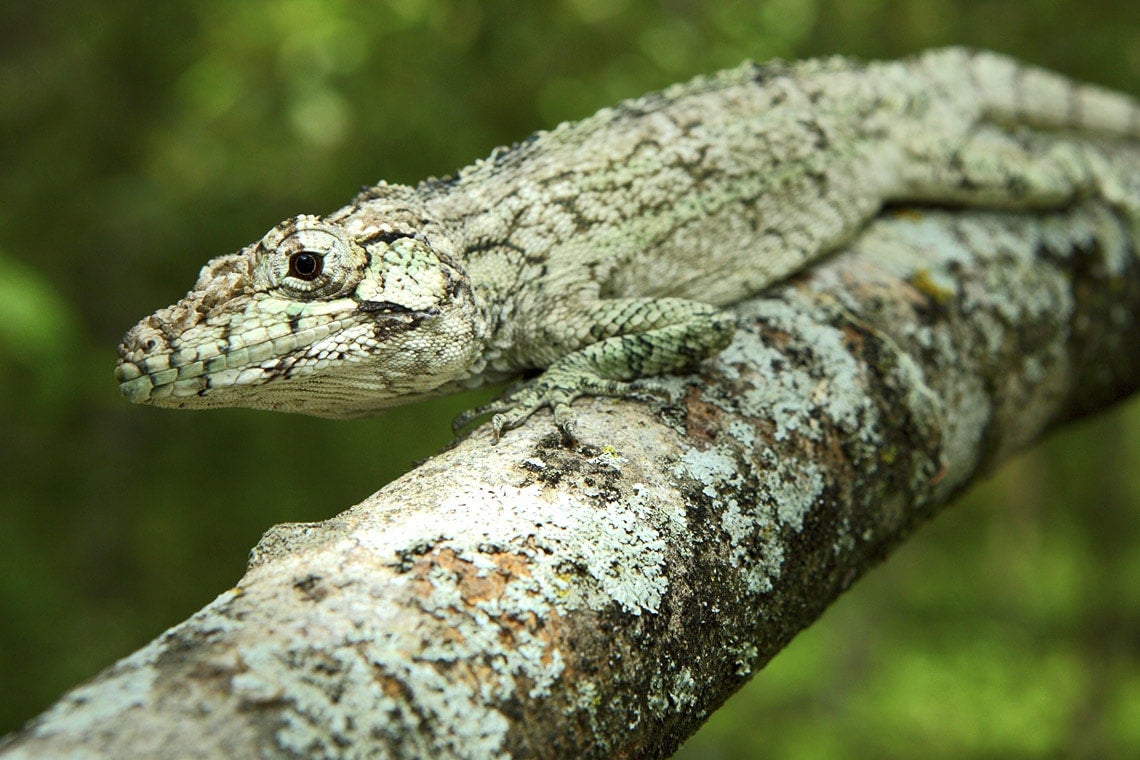As a reptile enthusiast, I’ve always been fascinated by lizards. These fascinating creatures come in all shapes, sizes, and colors, and they’re found all over the world. But if you’re not a native Spanish speaker, communicating about lizards can be a challenge.

Image: www.utoronto.ca
That’s where this guide comes in. In this article, we’ll explore the different ways to say “lizard” in Spanish, including various species and their unique characteristics. Whether you’re a traveler, a student, or simply curious about these amazing animals, this guide will help you expand your Spanish vocabulary and deepen your understanding of lizard species.
The General Term for “Lizard” in Spanish
The most common word for “lizard” in Spanish is lagarto. This term refers to lizards in general, without specifying any particular species. Lagarto is a masculine noun, so if you’re referring to a female lizard, you would use the feminine form, lagarta.
For example:
- Veo un lagarto en la pared. (I see a lizard on the wall.)
- La lagarta está tomando el sol. (The lizard is sunbathing.)
Different Species of Lizards
In addition to the general term lagarto, there are also many specific words for different species of lizards. Here are a few examples:
- Iguana: iguana
- Gecko: gecko
- Chameleon: camaleón
- Salamander: salamandra
- Basilisk: basilisco
Each of these words is used to refer to a specific type of lizard, and they all have their unique characteristics. For example, iguanas are large, herbivorous lizards that are found in tropical regions. Geckos are small, arboreal lizards that are known for their ability to climb on smooth surfaces. Chameleons are known for their ability to change color, and salamanders are amphibians that resemble lizards but live in water.
Lizard Terminology in Daily Conversation
Now that we’ve covered the basics of lizard terminology, let’s take a look at some common phrases that you might hear or use in daily conversation:
- ¿Qué tipo de lagarto es ese? (What type of lizard is that?)
- ¡Cuidado con el lagarto! (Watch out for the lizard!)
- Me encantan los lagartos. (I love lizards.)
By learning these phrases, you’ll be able to communicate more effectively about lizards in Spanish. Whether you’re talking to a friend, a tour guide, or a fellow reptile enthusiast, you’ll have the vocabulary you need to express yourself clearly.

Image: www.fark.com
Tips for Expanding Your Lizard Vocabulary
Here are a few tips for expanding your lizard vocabulary:
- Read books and articles about lizards. This is a great way to learn about different species and their unique characteristics.
- Watch documentaries and videos about lizards. This can help you see lizards in their natural habitat and learn about their behavior.
- Talk to other people who are interested in lizards. This is a great way to share knowledge and learn new things.
By following these tips, you’ll be able to build your lizard vocabulary and become more confident in communicating about these amazing creatures.
Frequently Asked Questions About Lizards
Here are some frequently asked questions about lizards:
- Q: Are lizards poisonous?
A: Most lizards are not poisonous. However, there are a few species that are venomous, such as the Gila monster and the Mexican beaded lizard. - Q: Do lizards have teeth?
A: Yes, lizards have teeth. However, their teeth are not used for chewing. They are used for holding prey and tearing it into pieces. - Q: How long do lizards live?
A: The lifespan of a lizard varies depending on the species. Some lizards, such as geckos, can live for up to 20 years. Other lizards, such as iguanas, can live for up to 50 years.
These are just a few of the many questions that you might have about lizards. If you have any other questions, please feel free to ask them in the comments below.
Conclusion
I hope this guide has helped you learn more about how to say “lizard” in Spanish. Whether you’re a traveler, a student, or simply curious about these amazing creatures, I encourage you to continue learning and exploring the world of lizards. There is so much to discover about these fascinating animals, and I’m sure you’ll enjoy learning more about them.
Thank you for reading!
How To Say Lizard In Spanish
Call to Action
Are you interested in learning more about lizards? If so, I encourage you to check out the following resources:
These resources can provide you with even more information about lizards, their behavior, and their habitat.